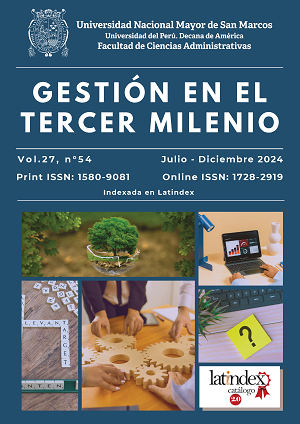Quality of service and loyalty of Undergraduate Students of the School of Administrative Sciences, UNMSM, Lima
DOI:
https://doi.org/10.15381/gtm.v27i54.27386Keywords:
quality, loyalty, satisfaction, students, educationAbstract
The quality of service is a fundamental axis in education, not only because of the greater demands that exist today, but also because of the exponential growth of the number of universities in the country, which makes them seek to meet the needs of their students so that they recommend their home or continue their studies. For this reason, the objective of this research was to find the relationship between the quality of service and the loyalty of undergraduate students of the School of Administrative Sciences of the Universidad Nacional Mayor de San Marcos (UNMSM). To achieve this, a quantitative, non-experimental, cross-sectional and correlational method was used, through a 28-question questionnaire applied to 328 students. In this study, it was found that 76.9% of the students perceived the quality of service as medium-low, and 81.1% of the students had medium-low loyalty to the university. In conclusion, a moderate and positive relationship was found between service quality and student loyalty, with quality of support, academic quality, and quality of career opportunities being the factors most related to loyalty.
Downloads
Published
Issue
Section
License
Copyright (c) 2024 Greta María Almora Vargas

This work is licensed under a Creative Commons Attribution 4.0 International License.
THE AUTHORS RETAIN THEIR RIGHTS:
(a) The authors retain their trademark and patent rights, and also over any process or procedure described in the article.
(b) The authors retain the right to share, copy, distribute, execute and publicly communicate the article published in Gestión en el Tercer Milenio journal (for example, place it in an institutional repository or publish it in a book), with acknowledgment of its initial publication in the Gestión en el Tercer Milenio.
(c) Authors retain the right to make a subsequent publication of their work, to use the article or any part of it (for example: a compilation of their work, lecture notes, thesis, or for a book), provided that they indicate the source. of publication (authors of the work, magazine, volume, number and date).






